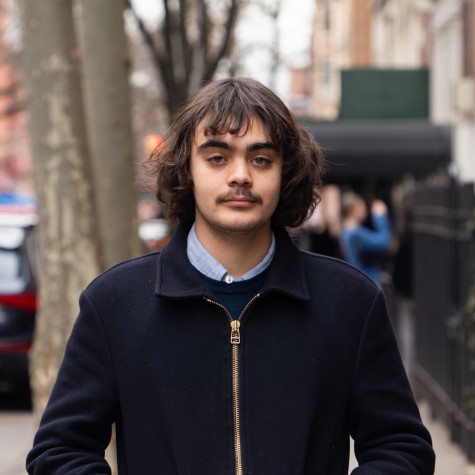Review: ‘The Conversation’ and its musings on state surveillance are even scarier 50 years after its initial run
Gene Hackman in the 1974 mystery-thriller film “The Conversation.” (Image courtesy of Rialto pictures)
February 7, 2022
Nearly 50 years after releasing in theaters for the first time, Francis Ford Coppola’s “The Conversation” (1974) remains the quintessential film about surveillance state-induced paranoia.
Playing at Film Forum in the West Village on an extended run due to its success with audiences last month, “The Conversation” tells the sad story of Harry Caul (Gene Hackman), who is both “the best bugger in the nation” and the loneliest man in the world. The film sees Caul become more and more frazzled after he is recruited by top executives at a business firm to record a cryptic conversation between a young couple he presumes to be in grave danger.
In the Q&A that followed the film, sound designer and supervising editor Walter Murch described “The Conversation” as a cross between Alfred Hitchcock and Hermann Hesse. Coppola’s espionage thriller is as interested in the magnitude of the conspiracy Harry is caught in as it is in how the pressure of being trapped in such a maelstrom would suck the life out of anyone.
Perfectly balancing suspense with a soul-scratching character study, “The Conversation” manages to ping-pong audiences between two equally, albeit distinct, catalysts of anxiety: The tension of the conspiracy and the anxiety produced by the character study. In doing so, the film draws a portrait of a man slowly drowning into himself.
The film that emerges from such a brilliantly calibrated cocktail of nervousness is a searing picture meant to sink itself into viewers’ skins. As Harry accrues wrinkles on his forehead from the conspiracy he’s gotten himself involved in, goosebumps are bound to creep up audiences as they witness the full weight of the conspiracy chipping away at this sanity.
Hackman’s facial expressions read like a chronicle of hopelessness throughout the film. The fact that somebody could embody such solemnity with a single look speaks to Hackman’s acting chops and the casting director’s incredible eye. With his rugged face, which Hackman somehow manages to make look as though he’s always about to break into a cold sweat, Harry comes off as a man in freefall. He’s afraid of dying, but feels as though it’s fast-approaching.
Over the course of the film, Harry begins to look grim. It’s a testament to Coppola’s incredible ability to offer viewers access to the souls of his characters. In the same way Coppola buried Marlon Brando in his titular role in “The Godfather,” he presents us with Harry Caul, the shy surveillance expert who just so happens to wear Hackman’s skin.
Coppola’s direction — combined with Hackman’s total embodiment of Harry as captured by cinematographers Haskell Wexler and Bill Butler — becomes a subtle etching of humanity in a state of decomposition. Playing with the film’s overarching themes of surveillance, it is interesting to consider how much of humanity’s decomposition is captured through recording devices, whether it be those that line dark alleyways or the ones used on film sets.
Coppola, anticipating the loss of privacy resulting from rapid developments in photographic technology, develops a film preoccupied with the fear that inhabits anyone who finds themselves before a running camera they have no control over. In Coppola’s mind, such a life is one of constant distress, perpetual paranoia and forced acquiescence to manipulative forces. For today’s audiences, the film might act as a vehicle for catharsis, by which they can process the disquietude that shrouds their minds anytime they find themselves thinking, “How does my phone know I need a new towel?” and “Why is Google recommending the book I was thinking about today?”
“The Conversation” is now on view at Film Forum at 209 W. Houston St., accompanied by a pre-recorded Q&A with sound designer Walter Murch.
Contact Nicolas Pedrero-Setzer at [email protected].


























































































































































